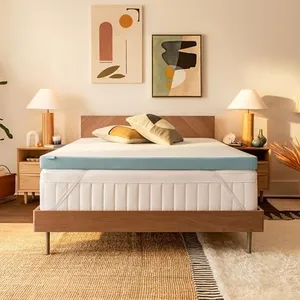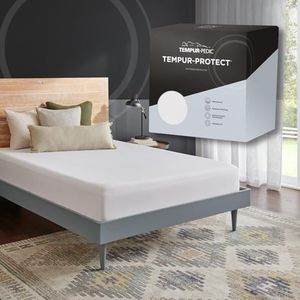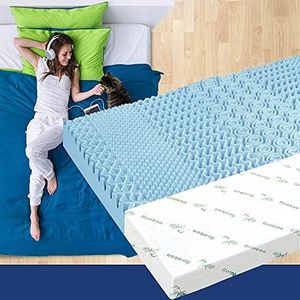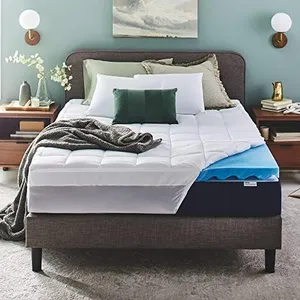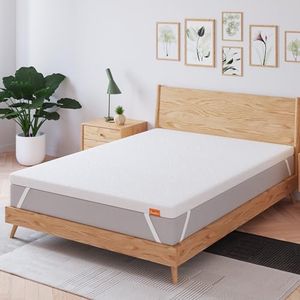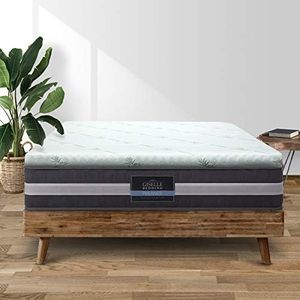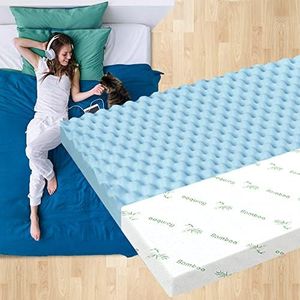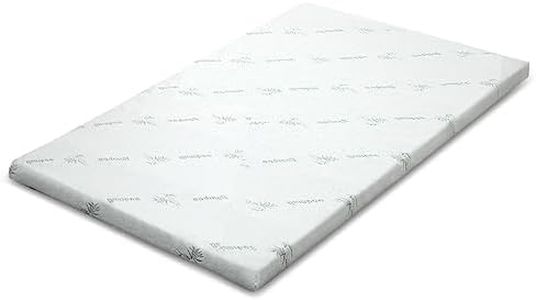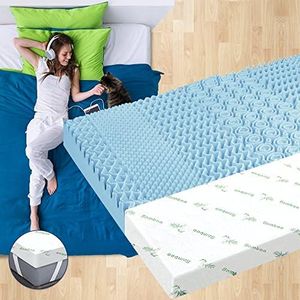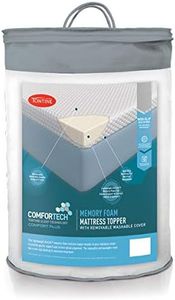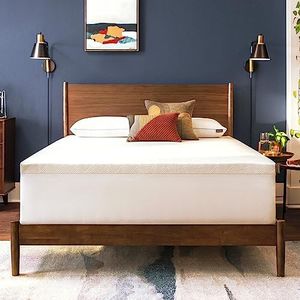We Use CookiesWe use cookies to enhance the security, performance,
functionality and for analytical and promotional activities. By continuing to browse this site you
are agreeing to our privacy policy
10 Best Memory Foam Topper
From leading brands and best sellers available on the web.Buying Guide for the Best Memory Foam Topper
Choosing a memory foam topper can make a big difference in your sleep comfort and even help refresh an older mattress. A good topper can improve support, add softness, or relieve pressure points. To find the best fit for you, it's important to focus on a few key features that determine how the topper will feel and perform. Think about your sleep habits, health needs, and how you'd like your bed to feel, then match those to the right topper features.ThicknessThickness refers to how deep the memory foam layer is, usually ranging from about 1 inch to 4 inches. This spec affects how much of a difference the topper makes to your bed. Thinner toppers (1-2 inches) add a touch of softness or slight pressure relief, ideal if your mattress just needs a bit of comfort. Medium thickness (2-3 inches) offers balanced support and plushness, suitable for most people wanting noticeable improvement. Thicker toppers (3-4 inches) provide deep cushioning and are best for people who want maximum softness, need serious pressure relief, or are side sleepers. Consider how much change you want to feel—light adjustment or a total bed makeover—to choose the right thickness.
DensityDensity tells you how much material is packed into a certain volume of foam, often measured in pounds per cubic foot (lbs/ft³). Higher density foams (4 lbs/ft³ and above) are more supportive, last longer, and hug your body more closely. Lower density foams (2-3 lbs/ft³) feel lighter, softer, and are easier to move on, but may wear out faster. If you want durability and better pressure relief, go for higher density. If you prefer easy movement or don’t want to sink in deeply, a lower density might be best. Consider your weight, how much support you need, and whether you like the “hugging” feel of deeply conforming foam.
FirmnessFirmness is how hard or soft the topper feels when you lie down. Each brand may describe firmness differently, but it generally ranges from soft to medium to firm. Soft toppers add plushness to a hard bed; medium toppers provide a balance of support and comfort and work well for most people; firm toppers can help if your mattress is too soft or if you need more support for your back. Choose soft if you want to sink in or relieve pressure on shoulders and hips, medium for overall comfort, or firm if you need support or want to keep from sinking in too much.
Cooling FeaturesMemory foam tends to trap heat, so some toppers include cooling features such as gel infusions, open-cell structures, or breathable covers. Gel or copper infusions help the topper stay cool, while an open-cell structure or ventilated design allows for more airflow. If you sleep hot or live in a warm climate, look for these cooling technologies. If you usually don’t overheat at night, standard memory foam is usually fine.
Cover MaterialThe cover is the fabric that wraps around the foam topper, and it can affect breathability, feel, and cleanliness. Some covers are removable and machine-washable, which is helpful for easy cleaning. Others might be made of bamboo, cotton, or synthetic fabrics, each offering different cooling and softness. If you have allergies or want something easy to clean, check if the cover is removable and what material it’s made from.
CertificationsCertifications (like CertiPUR-US) show the foam meets certain standards for safety and chemicals. These certifications can give peace of mind about what you’re sleeping on, especially if you have sensitivities or want to avoid harmful substances. Look for certification labels if you care about avoiding chemicals and want to make an eco-friendlier or healthier choice for your home.
